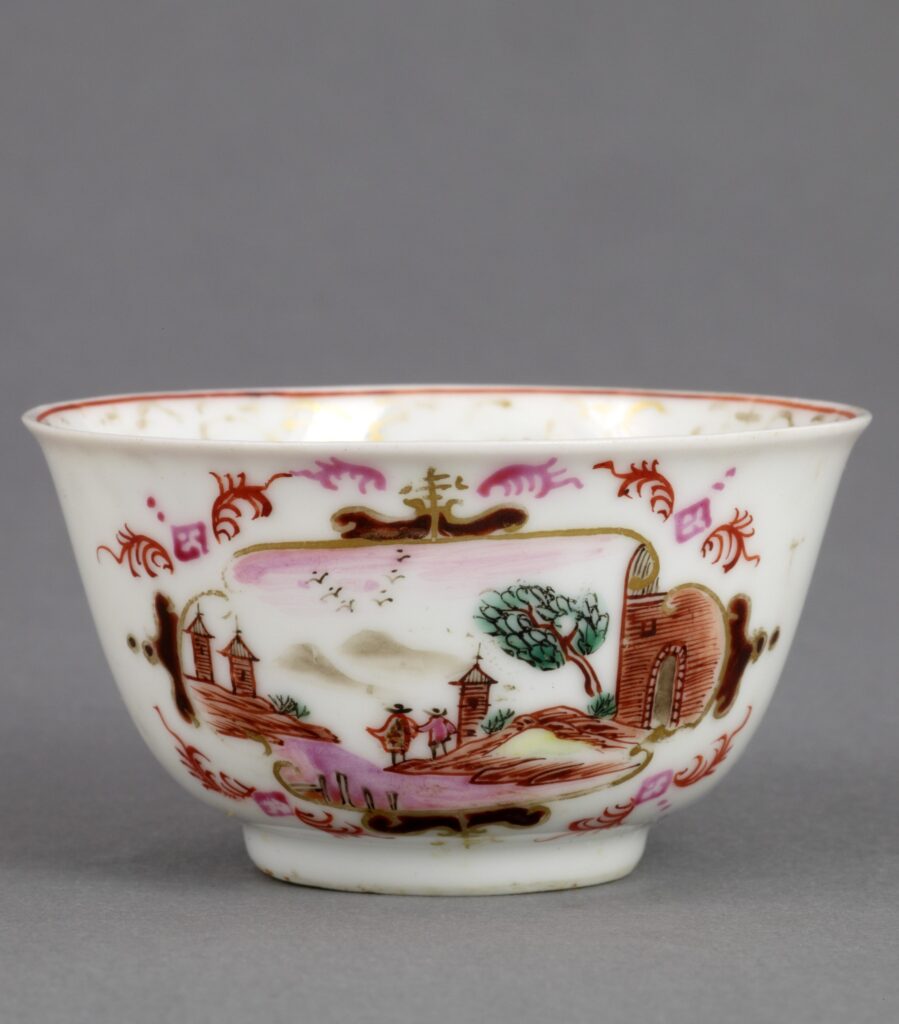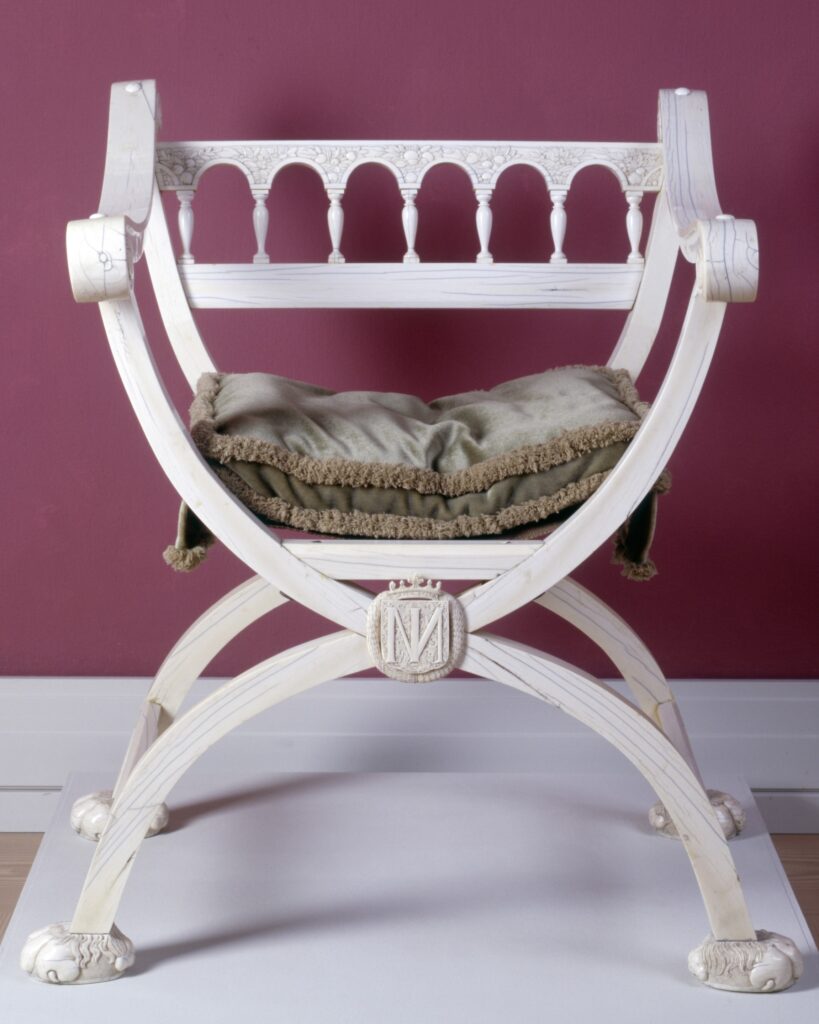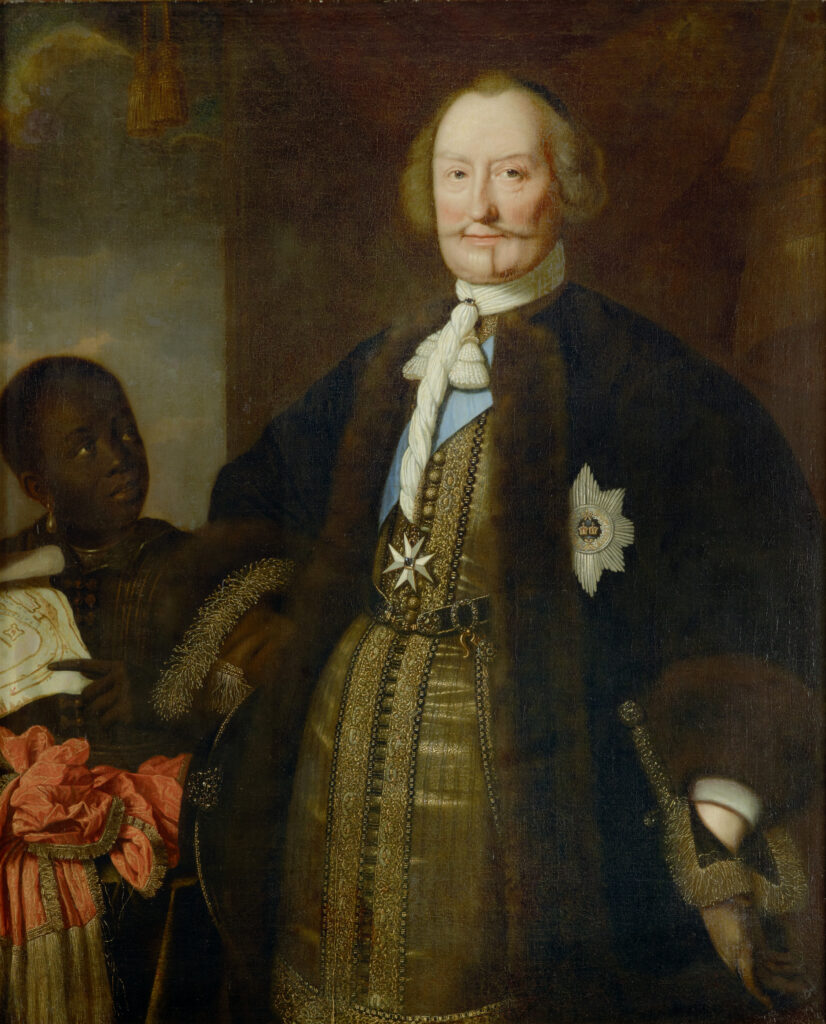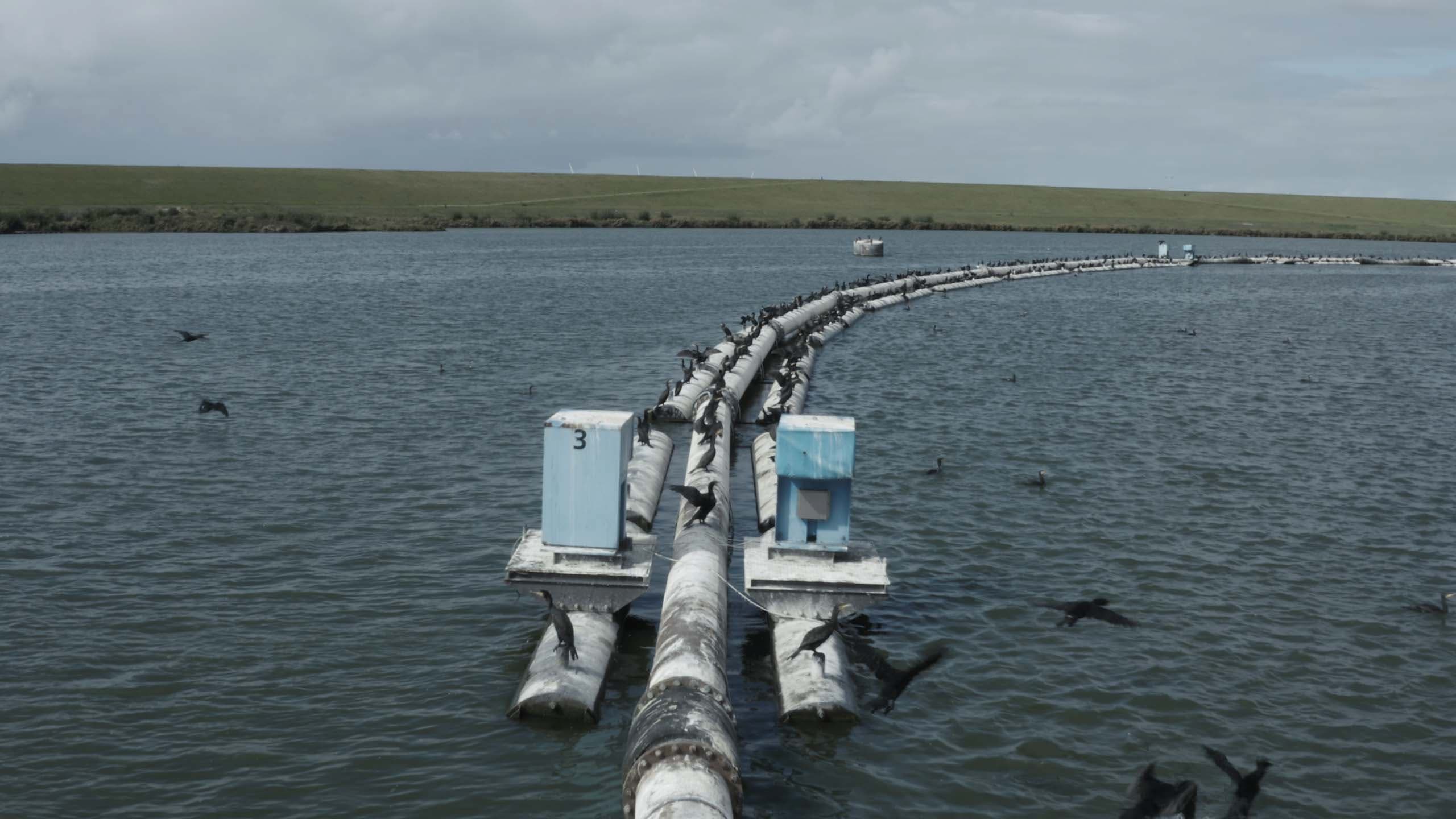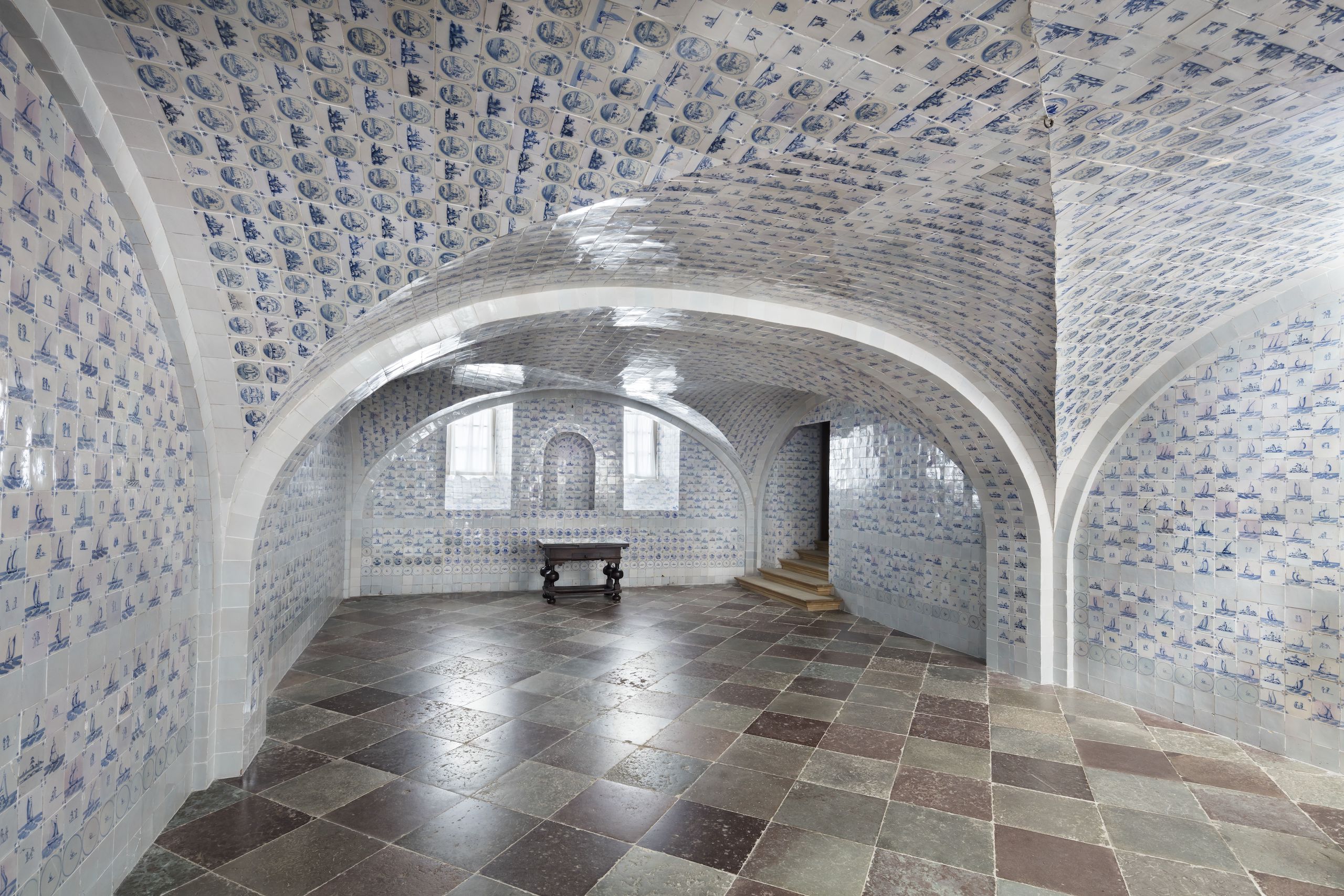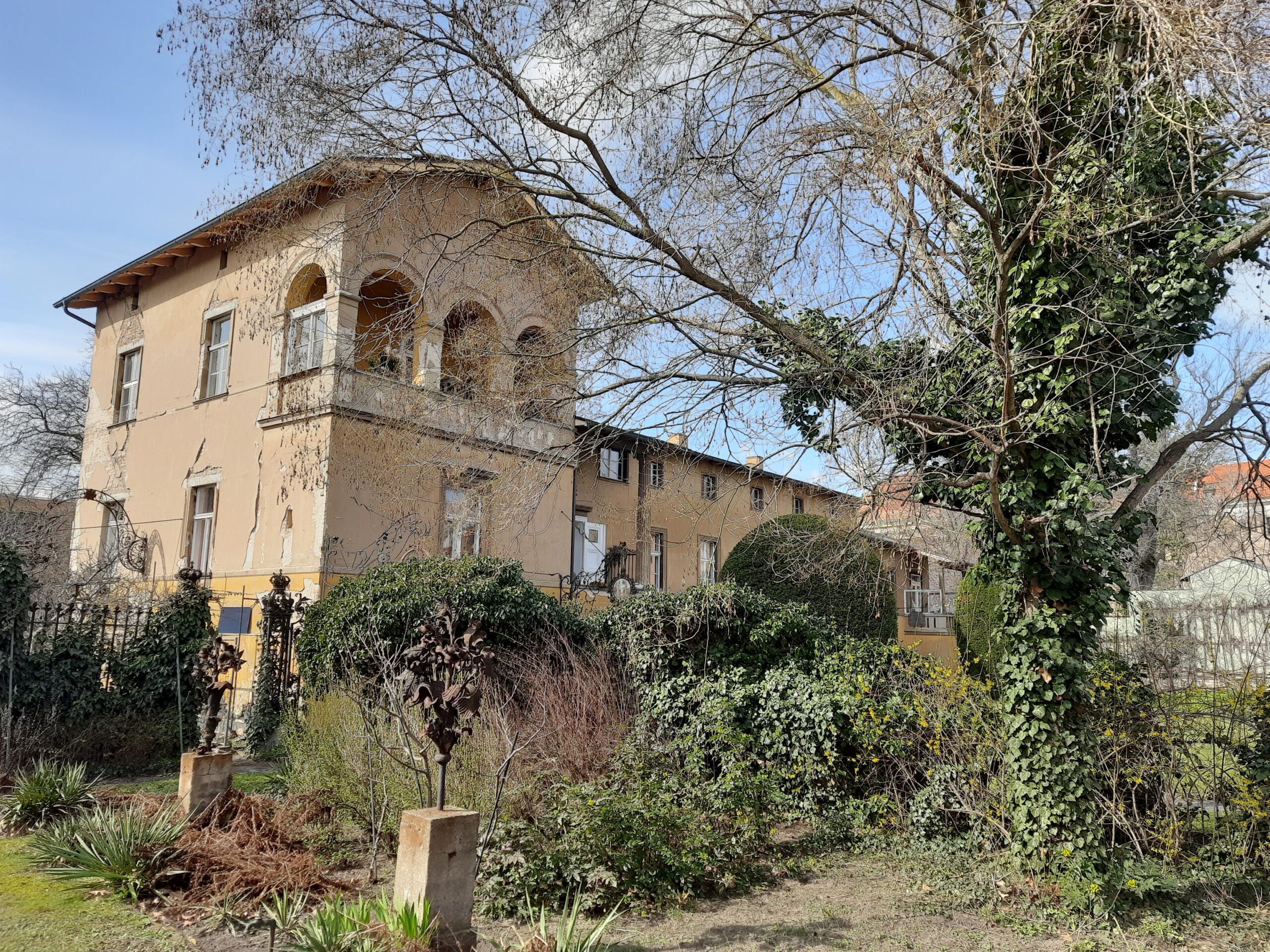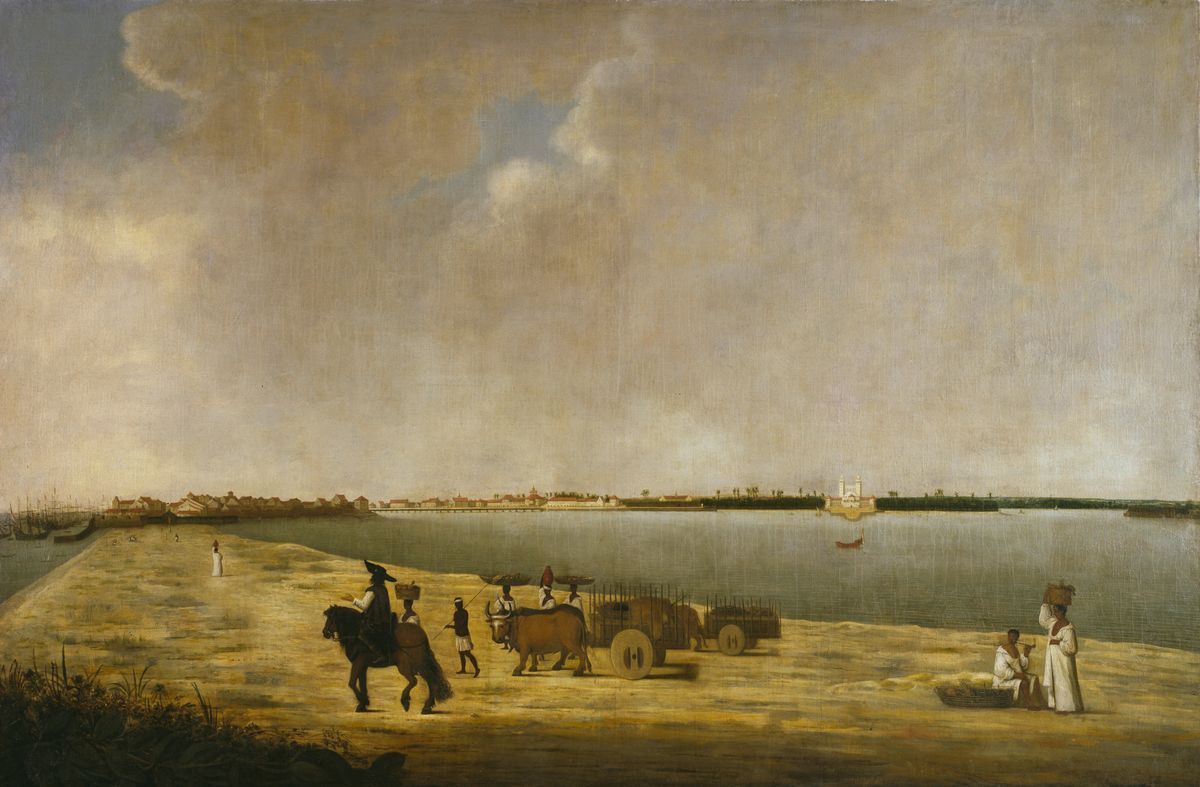
Palaces. Prussia. Colonial.
On 4 July 2023, the Stiftung Preußische Schlösser und Gärten Berlin-Brandenburg (SPSG) is opening the special exhibition “Schlösser. Preußen. Kolonial. Biografien und Sammlungen im Fokus” (Prussian Palaces. Colonial Histories. Biographies and Collections Castles) at Charlottenburg Palace in Berlin. The show focuses on the close relations between Brandenburg and the Dutch Republic.
The Dutch West India Company (WIC) served Brandenburg’s Elector, Frederick William, as a role model when he founded the Brandenburgisch-Afrikanische Compagnie (BAC) in 1682. The slave trade very quickly became its primary source of income. Brandenburg officials trafficked heavily in slavery, taking at least 20,000 enslaved people from their trading posts along the West African Coast (now Ghana) to America.
The medallion depicts two three-master tall ships from Brandenburg off a coast labelled “GUINEA”. The circumscription explains the voyage’s purpose: “The ships are drawn here by gold, like a magnet attracting iron.” The medallion was minted to commemorate Brandenburg’s entry into transatlantic trade with gold, ivory and slaves.
Medallion marking the start of a Brandenburg seafaring venture to the coast of West Africa, 1681, SPSG │ Photo: Wolfgang Lies/Ilona Schwarz.
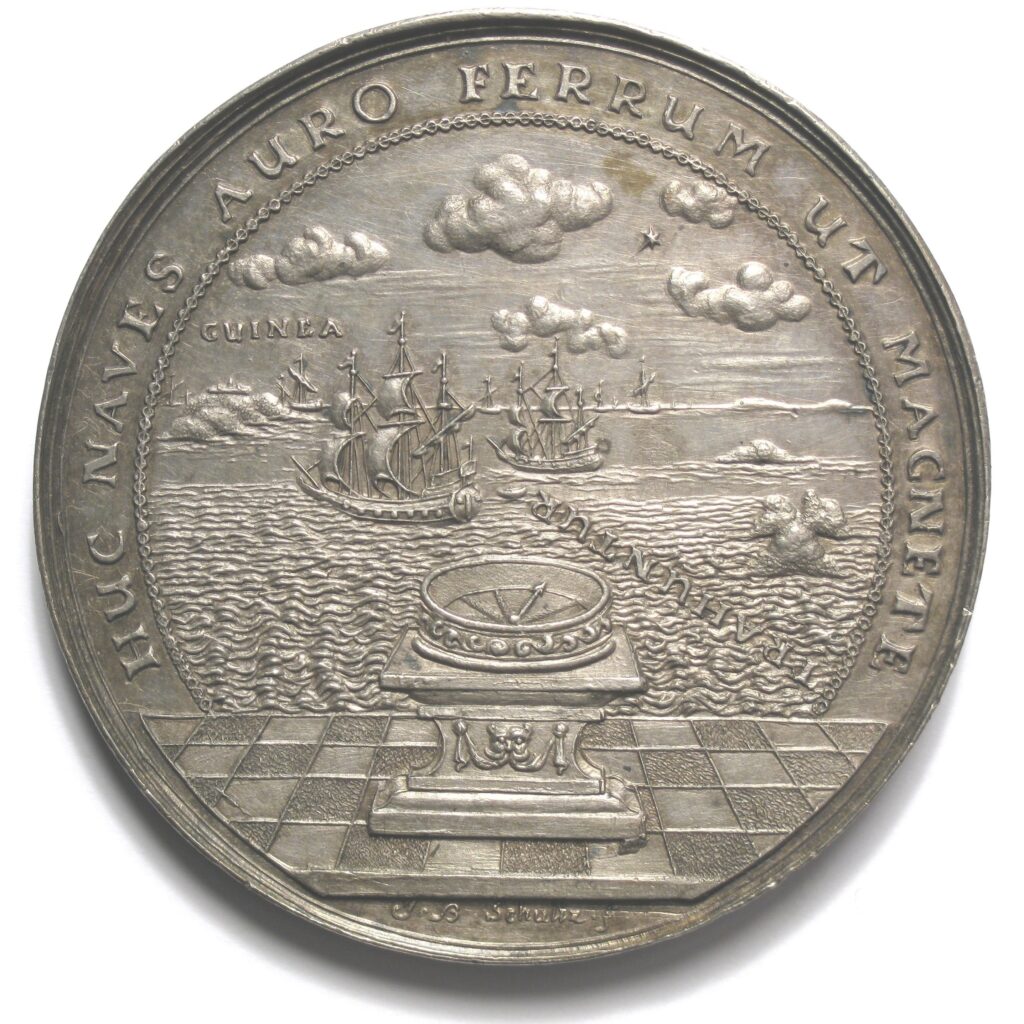
John Maurice of Nassau-Siegen, governor of the Dutch West India Company in Brazil, was one of the leading players in Dutch colonialism. Moreover, he was closely intertwined with the Brandenburg court. From 1637 to 1644, John Maurice administered the Dutch colony in Brazil. In parallel, he operated profitable sugar plantations and refineries that made enslaved people from Africa work under inhumane conditions.
After his return from South America, John Maurice served the elector as stadholder in the Duchy of Cleves and the County of Mark; he later also governed the Principality of Minden. The two men were bound by friendship, which was reinforced by Frederick William’s marriage to Louise Henriette of Nassau (House of Orange), a cousin of John Maurice.
An ivory furniture ensemble, which the Brandenburg elector acquired in 1652, represents the bond between the Netherlands and Brandenburg. John Maurice of Nassau-Siegen commissioned and produced the set in Brazil around 1640. The trade and transportation routes for ivory from the West African Coast to South America were the same as for slaves, who were routinely shipped across the Atlantic under inhumane conditions. Many did not survive these voyages. With the profits made from trafficking human beings, John Maurice financed the arts and sciences at his court, including furniture sets made of ivory.
It appears that John Maurice’s prominent monogram on the furniture set’s armchair was also used to brand slaves. Such a brand on the shoulder of an unknown black woman has only recently been identified in a Brazilian graphic work by Zacharias Wagner, an artist in John Maurice’s entourage.
Indirectly, the large quantities of East Asian porcelain purchased for the Brandenburg/Prussian court during the 17th century can also be linked to the slave trade because these art objects came into the palaces through the Dutch East India Company (VOC). However, the VOC would not have been competitive without slave labour and the slave trade since it was only the use of enslaved people that made trading profitable. It affected the entire overseas trade with Eastern Asia and, consequently, the porcelain trade.
All these connections, and many more, can be experienced and explored in-depth in the SPSG’s special exhibition “Prussian Palaces. Colonial Histories. Biographies and Collections” at Charlottenburg Palace.
– Dr. Susanne Evers, Sammlungskustodin, Stiftung Preußische Schlösser und Gärten

04.07.2023 – 31.10.2023 │ Tuesday – Sunday: 10:00 -17:30
Schlösser. Preussen. Kolonial. Biografien und Sammlungen im Fokus
Schloss Charlottenburg – New Wing
Spandauer Damm 10-22
14059 Berlin
Header Image: Frans Post (Circle of), View of Mauritsstad near Recife from the Sea, c. 1650, SPSG │ Photo: Klaus Bergmann
Mauritsstad, the capital of the Dutch West Indies, can be seen in the background of the painting

